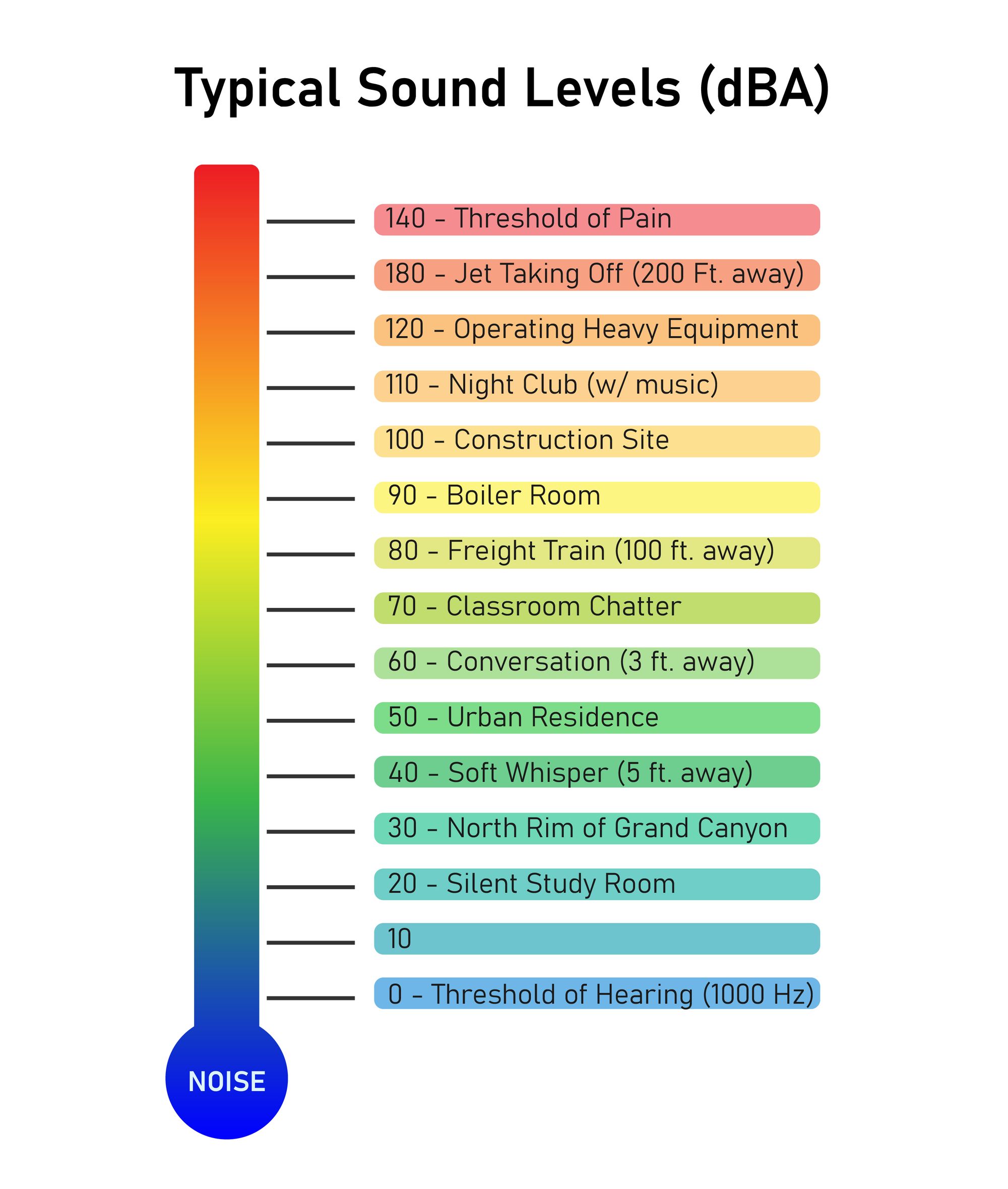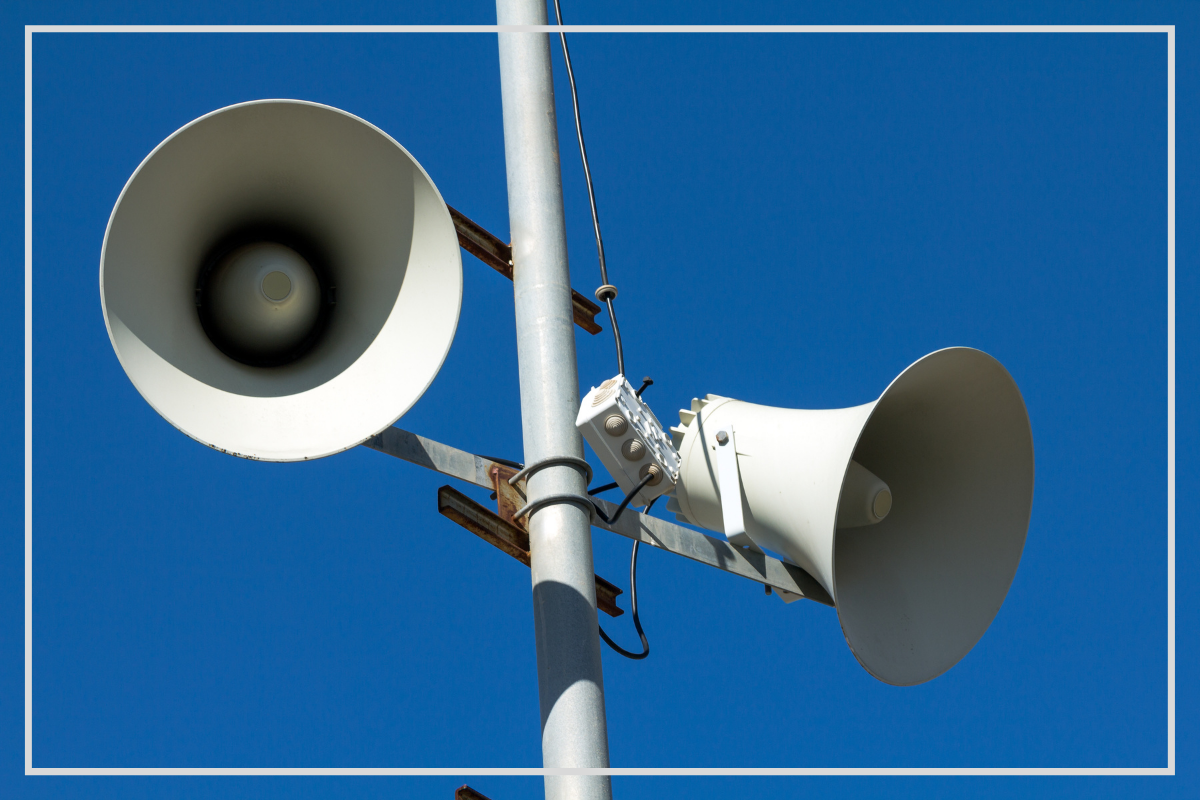- What Is 100 Decibels?
1.1 Everyday Activities
1.2 Event
1.3 Tools and More - How Loud Is 100 Decibels Compared to Other dB
2.1 50 Decibels
2.2 80 Decibels
2.3 120 Decibels - How Long Can You Listen to 100 dB?
- Is Hearing Loss Possible From this Volume?
4.1 Is It Suitable for Headphones? - How Far Away Can This Sound Be Heard?
- How Many Watts Is 100 dB?
- Use DecibelPro.App to Measure dB
The decibel scale helps us determine the loudness of sounds audible to the human ear. It ranges from 0 dB (softer than a leaf falling) to 120-140 dB (very loud sounds such as explosions that can instantly damage your hearing).
In this article, we’re looking into how loud 100 decibels is and how it compares to other sound levels. We’re also going to look into whether 100 decibels can cause hearing loss and what is the maximum exposure time for this decibel level.
What Is 100 Decibels?
Decibels are used to express the intensity or loudness of a particular sound. The higher up a sound is on the decibel scale, the louder it is considered and the more harmful it can be to human hearing.
100 decibels is a high decibel level. It is considered dangerous to human hearing and can cause hearing damage or hearing loss if your exposure to it exceeds 15 minutes.
The maximum recommended limit for human exposure is 85 decibels over a period of 8 hours or 70 decibels over a period of 24 hours. Sounds exceeding these time-weighted averages (TWA) are considered harmful to human hearing and have the potential of causing hearing damage or hearing loss.
Hearing protection is recommended when you are exposed to noise levels of 85 decibels or above.
To better understand how loud 100 decibels is, here is a list of common sounds that reach this decibel level:
Everyday Activities
Common, everyday activities that may reach or exceed 100 decibels include:
- Driving a motorcycle, an ATV, a snowmobile, or a tractor
- Listening to music on a stereo system, boom box, a smartphone, or a personal listening device with headphones at a loud volume
- Using a lawnmower or a jackhammer
- Fitness classes
- Car horns (at 5 m)
Events
The following events can be as loud as 100 decibels or even over:
- Concerts
- School dances
- Sporting events like football, soccer, or hockey games
- Monster truck shows
- Car races
- Movie theaters
- Discos
Tools and More
You may be exposed to noise levels of or above 100 decibels if you:
- Use power tools, jackhammers, lawnmowers, leaf blowers
- Are exposed to sirens, firearms, or fireworks
- Are exposed to helicopter or jet takeoffs or landings
How Loud Is 100 Decibels Compared to Other dB
Compared to other moderate or loud dB levels (of up to 85 decibels), 100 decibels is considered very loud and dangerous to human hearing.
When measuring a sound, a 10 dB increase equals a 10-time increase in the intensity of the sound. Therefore, a sound that is 100 decibels is 10 times louder than a sound that is 90 decibels (like an incoming subway train) and 100 times louder than a sound that is 80 decibels (like a vacuum cleaner).
50 Decibels
50 decibels (the noise level of a residential street) is considered a moderate noise level that is safe for human hearing no matter the exposure time.
A 100 dB sound like that of a power tool or a car horn is 100,000 times louder than a sound that is 50 decibels like an average suburban home or a quiet room. We, humans, will perceive this difference as 32 times louder.
80 Decibels
80-decibel sounds are considered quite loud and potentially dangerous to human hearing. Long-term exposure (over 24 hours) to sounds above 70 decibels may cause hearing damage or lead to hearing loss.
Common 80 dB sounds include heavy traffic, noisy restaurant, or garbage disposals.
Compared to 80 dB sounds, 100-decibel sounds are 100 times more intense and, therefore, even more dangerous to your hearing. You will perceive a 100 dB sound as 4 times louder than a sound that is 80 dB.
120 Decibels
120 decibels is the threshold of pain. Sounds as loud as 120 decibels can instantly damage your hearing or cause hearing loss.
120 dB sounds include the sound of a loud siren, the explosion of firecrackers, or a very loud rock concert.
In this case, 100 dB sounds are 100 less intense and they will be perceived by a human as 4 times less loud.
How Long Can You Listen to 100 dB?
The louder and potentially more dangerous a sound is, the more you should limit your exposure to it. Specifically, you should limit your exposure to sounds above 70 decibels to 24 hours and sound above 85 decibels to 8 hours.
In the case of sounds reaching a level of 100 dB, the maximum recommended exposure time is 15 minutes. An only 3-decibel increase of that sound (to 103 dB) reduces the maximum recommended exposure time to only 7.5 minutes.
Here’s a sample decibel chart that shows the maximum recommended exposure for decibel levels over 85 dB:

Is Hearing Loss Possible From this Volume?
Yes, hearing loss is possible from exposure to noise levels of 100 decibels. Hearing damage or hearing loss can occur when your exposure to noise levels of 100 decibels exceeds 15 minutes.
If you enjoy listening to loud music (that can exceed 100 dB at full volume) or regularly use loud power tools, you should always wear hearing protection and/or limit your exposure time.
Is It Suitable for Headphones?
100 decibels is a suitable level for headphones but for no more than 15 minutes. Exposure exceeding 15 minutes may cause hearing damage or hearing loss.

When you are listening to loud music on your headphones from a personal listening device such as an MP3 player or a smartphone, sound levels can easily exceed 100 decibels and reach 105-110 dB. Listening to music at a loud volume (close to maximum) for more than 5-15 minutes at a time (depending on the dB level) puts you at risk of irreversible hearing damage and even hearing loss.
How Far Away Can This Sound Be Heard?
How far away you can hear a 100 dB sound depends on:
- the sound’s frequency
- how the noise spreads out as the sound travels
- whether or not there are any obstacles between the sound and the listener that may dampen the sound
The further you are from the source of a sound, the more that sound’s intensity will decrease and the less loud you will perceive it.
In fact, each time your distance from the source doubles, the sound decreases by 6 dB. If a sound is 100 dB at the source, it will be 94 dB at 1 meter, 88 dB at 2 meters, and so on. Therefore, you will generally be able to hear a 100 dB sound at a maximum of 16 meters.
How Many Watts Is 100 dB?
How much power a speaker needs from an amp to sound good depends on the speaker’s sensitivity. Sensitive speakers need less power than mid-quality speakers.
For mid-priced home speakers that can handle between 85 and 110 dB, you will not need more than 120 Watts.
Use DecibelPro.App to Measure dB
If you want to easily find out the decibel level of any sound, you can use a decibel meter app like Decibel Pro. Just like a professional sound level meter, Decibel Pro instantly measures noise levels and displays the decibel level on your iPad’s or iPhone’s screen.
With Decibel Pro, you can:
- monitor the noise levels you are exposed to in order to avoid hearing damage or hearing loss
- measure noise levels in your home to ensure they are safe for infants or that you are not bothering your neighbors
- regularly check your hearing with the in-app hearing test
- use the spectrum analyzer to professionally set up your sound system
- measure your daily noise exposure
To download Decibel Pro, go to the AppStore. To learn more about the Decibel app, click here.



